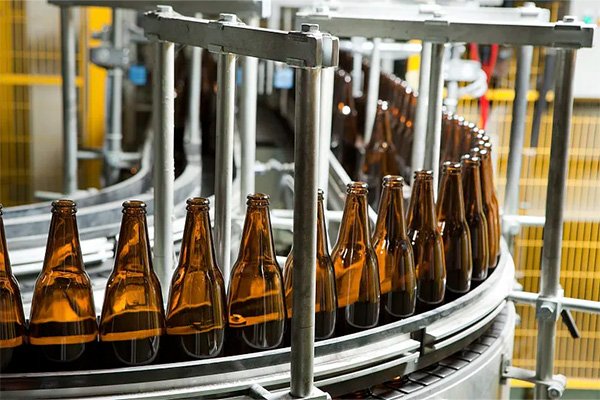The advancement of industrial automation has made it inevitable for beer production to transition from manual operations to automated processes. Top beer producers in China have effectively adopted valve array systems, greatly lowering labor demands, decreasing safety hazards, and enhancing product quality. While most discussions focus on beer pipeline systems, there is limited research on gas valve arrays for fermentation. This article explores the design and benefits of automated gas valve arrays in beer fermentation, emphasizing the integration of can filling machines to enhance operational efficiency.

Traditional Fermentation Gas Piping Systems
Manual Operation Challenges
| Steps | Operation | Function |
| Add wort | The tank top connecting pipe is connected to the gas pipeline valve group, the pressure regulating valve is set to the initial pressure, and the exhaust gas discharge valve is opened | Exhaust gas |
| Recover CO2 | The exhaust gas discharge valve is closed and the CO2 recovery valve is opened | Recover CO2 in the early stage of fermentation |
| Temperature sugar to meet standard | The pressure regulating valve is set to the mid-term pressure | Recover CO2 in the middle stage of fermentation |
| Exit fermentation tank | The CO2 recovery valve is closed and the CO2 supply valve is opened | Preparation for fermentation liquid out of the tank |
| Empty fermentation tank | The CO2 supply valve is closed, the pressure regulating valve is adjusted to zero, and the CO2 recovery valve is opened | Recover CO2 |
| The CO2 recovery valve is closed and the exhaust gas discharge valve is opened | Exhaust gas | |
| Before cleaning fermentation tank | The exhaust gas discharge valve is closed and the compressed air supply valve is opened | Replace CO2 in the tank |
Each fermentation tank requires a separate pressure regulator, and each gas pipe has a manual valve. Workers must frequently switch valves and adjust pressure settings throughout the fermentation cycle, increasing labor intensity and the risk of errors. For example:
-
Compressed air entering CO₂ recovery lines reduces CO₂ purity.
-
Compressed air mixing with fermented beer increases dissolved oxygen levels.
To prevent these issues, can filling machines automated valve systems must replace manual operations.
Valve Selection for Automation
Comparing Valve Types
Automated valves include:
-
Pneumatic butterfly valves – Prone to seal degradation, requiring three valves for leak-proof functionality.
-
Mixing-proof valves – More efficient, reducing installation space and hygiene risks.
Choosing the Right Valve
-
Double-seat mixing-proof valves – Ideal for high-pressure, large-diameter pipes.
-
Single-seat mixing-proof valves – Cost-effective for low-pressure, small-diameter gas pipes.
Optimized Gas Valve Array Design
Improvements Over Traditional Systems
-
Combining Compressed Air & CIP Pipes
-
Compressed air can replace CO₂ before CIP cleaning, reducing redundant piping.
-
Using double-seat valves prevents backflow and water hammer effects.
-
| Fermentation gas pipe | Function |
| CIP liquid supply pipe | Fermentation tank and dual-purpose tank CIP liquid supply and compressed air supply |
| Compressed air pipe | |
| CO2 low pressure recovery pipe | Recover CO2 in the early stage of fermentation |
| CO2 high pressure recovery pipe | Recover and balance CO2 in the middle and late stages of fermentation |
| CO2 gas supply pipe | CO2 backup pressure in fermentation tank |
| Exhaust gas exhaust pipe | Exhaust gas discharge |
-
Dual CO₂ Recovery Lines
-
Fermentation requires varying pressure levels; two CO₂ recovery lines optimize efficiency.
-
-
Proper Valve Orientation to Prevent Damage
-
CIP liquid supply connects to the lower valve chamber to avoid water hammer.
-
Compressed air flows from the lower to upper chamber to prevent air hammer.
-
Tank-top pipes link to the upper valve chamber to avoid pressure-induced leaks.
-
-
Leak Detection & Safety Measures
-
A liquid level sensor at the pipe’s low point detects residual CIP liquid, triggering drainage to prevent contamination.
-
If a single-seat valve fails due to water hammer, the sensor activates an emergency drain.
-
Future Automation Enhancements
While this design significantly reduces manual intervention, further improvements include:
-
CO₂ purity sensors for fully automated gas control.
-
Integration with can filling machines for seamless packaging operations.
Have questions about packaging machines or need a custom line? Contact Sokos Machinery for free expert advice and tailored solutions.

